Person of the Year 2018:TheGuardiansand theWar on Truth
Short List
Person of the Year
The Short List
Karl Vick
Moises Saman—Magnum Photos
for TIMEThe stout man with the gray goatee and the gentle demeanor dared to disagree with his country’s government. He told the world the truth about its brutality toward those who would speak out. And he was murdered for it.
Every detail of Jamal Khashoggi’s killing made it a sensation: the time stamp on the surveillance video that captured the Saudi journalist entering his country’s Istanbul consulate on Oct. 2; the taxiway images of the private jets bearing his assassins; the bone saw; the reports of his final words, “I can’t breathe,” recorded on audio as the life was choked from him.
But the crime would not have remained atop the world news for two months if not for the epic themes that Khashoggi himself was ever alert to, and spent his life placing before the public. His death laid bare the true nature of a smiling prince, the utter absence of morality in the Saudi-U.S. alliance and—in the cascade of news feeds and alerts, posts and shares and links—the centrality of the question Khashoggi was killed over: Whom do you trust to tell the story?
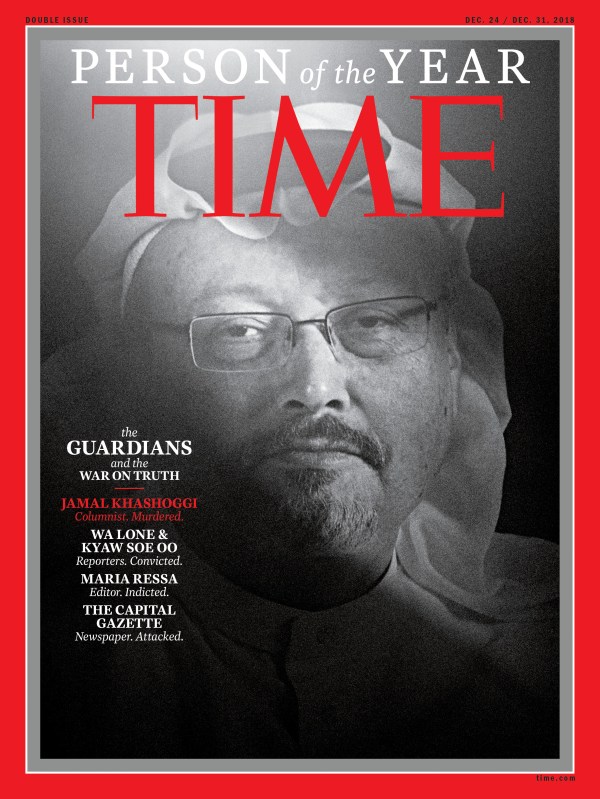
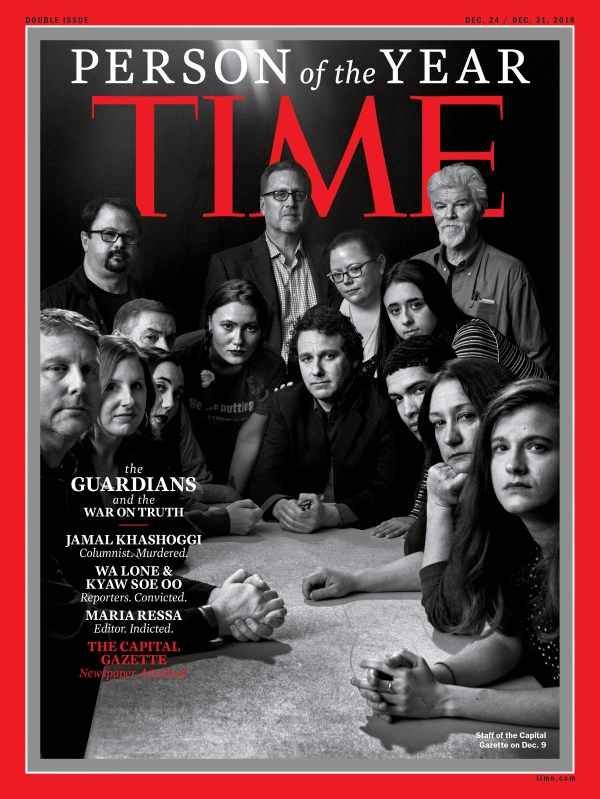


Buy a copy of the Jamal Khashoggi 2018 Person of the Year issue.
Buy a copy of the Capital Gazette 2018 Person of the Year issue.
Read TIME Editor in Chief Edward Felsenthal on this year's Person of the Year Choice.
Khashoggi put his faith in bearing witness. He put it in the field reporting he had done since youth, in the newspaper editorship he was forced out of and in the columns he wrote from lonely exile. “Must we choose,” he asked in the Washington Post in May, “between movie theaters and our rights as citizens to speak out, whether in support of or critical of our government’s actions?” Khashoggi had fled his homeland last year even though he actually supported much of Crown Prince Mohammed bin Salman’s agenda in Saudi Arabia. What irked the kingdom and marked the journalist for death was Khashoggi’s insistence on coming to that conclusion on his own, tempering it with troubling facts and trusting the public to think for itself.
Such independence is no small thing. It marks the distinction between tyranny and democracy. And in a world where budding authoritarians have advanced by blurring the difference, there was a clarity in the spectacle of a tyrant’s fury visited upon a man armed only with a pen. Because the strongmen of the world only look strong. All despots live in fear of their people. To see genuine strength, look to the spaces where individuals dare to describe what’s going on in front of them.
In the Philippines, a 55-year-old woman named Maria Ressa steers Rappler, an online news site she helped found, through a superstorm of the two most formidable forces in the information universe: social media and a populist President with authoritarian inclinations. Rappler has chronicled the violent drug war and extrajudicial killings of President Rodrigo Duterte that have left some 12,000 people dead, according to a January estimate from Human Rights Watch. The Duterte government refuses to accredit a Rappler journalist to cover it, and in November charged the site with tax fraud, allegations that could send Ressa to prison for up to 10 years.
In Annapolis, Md., staff of the Capital, a newspaper published by Capital Gazette Communications, which traces its history of telling readers about the events in Maryland to before the American Revolution, press on without the five colleagues gunned down in their newsroom on June 28. Still intact, indeed strengthened after the mass shooting, are the bonds of trust and community that for national news outlets have been eroded on strikingly partisan lines, never more than this year.
Watch: Why the Guardians Are the 2018 Person of the Year
And in prison in Myanmar, two young Reuters reporters remain separated from their wives and children, serving a sentence for defying the ethnic divisions that rend that country. For documenting the deaths of 10 minority Rohingya Muslims, Kyaw Soe Oo and Wa Lone got seven years. The killers they exposed were sentenced to 10.
This year brought no shortage of other examples. Bangladeshi photographer Shahidul Alam was jailed for more than 100 days for making “false” and “provocative” statements after criticizing Prime Minister Sheikh Hasina in an interview about mass protests in Dhaka. In Sudan, freelance journalist Amal Habani was arrested while covering economic protests, detained for 34 days and beaten with electric rods. In Brazil, reporter Patricia Campos Mello was targeted with threats after reporting that supporters of President-elect Jair Bolsonaro had funded a campaign to spread false news stories on WhatsApp. And Victor Mallet, Asia news editor for the Financial Times, was forced out of Hong Kong after inviting an activist to speak at a press club event against the wishes of the Chinese government. Worldwide, a record number of journalists—262 in total—were imprisoned in 2017, according to the Committee to Protect Journalists, which expects the total to be high again this year.
This ought to be a time when democracy leaps forward, an informed citizenry being essential to self-government. Instead, it’s in retreat. Three decades after the Cold War defeat of a blunt and crude autocracy, a more clever brand takes nourishment from the murk that surrounds us. The old-school despot embraced censorship. The modern despot, finding that more difficult, foments mistrust of credible fact, thrives on the confusion loosed by social media and fashions the illusion of legitimacy from supplicants.
Modern misinformation, says David Patrikarakos, author of the book War in 140 Characters, titled after the original maximum length of a Twitter post, “does not function like traditional propaganda. It tries to muddy the waters. It tries to sow as much confusion and as much misinformation as possible, so that when people see the truth, they find it harder to recognize.”
The story of this assault on truth is, somewhat paradoxically, one of the hardest to tell. “We all learned in our schools that journalists shouldn’t be the story ourselves, but this is, again, not our choice,” says Can Dündar, who, after being charged with revealing state secrets and nearly assassinated as a newspaper editor in Turkey, fled to Germany, where he set up a news site. “This is the world of the strong leaders who hate the free press and truth.”
That world is led, in some ways, by a U.S. President whose embrace of despots and attacks on the press has set a troubling tone. “I think the biggest problem that we face right now is that the beacon of democracy, the one that stood up for both human rights and press freedom—the United States—now is very confused,” says Ressa, the Rappler editor. “What are the values of the United States?”
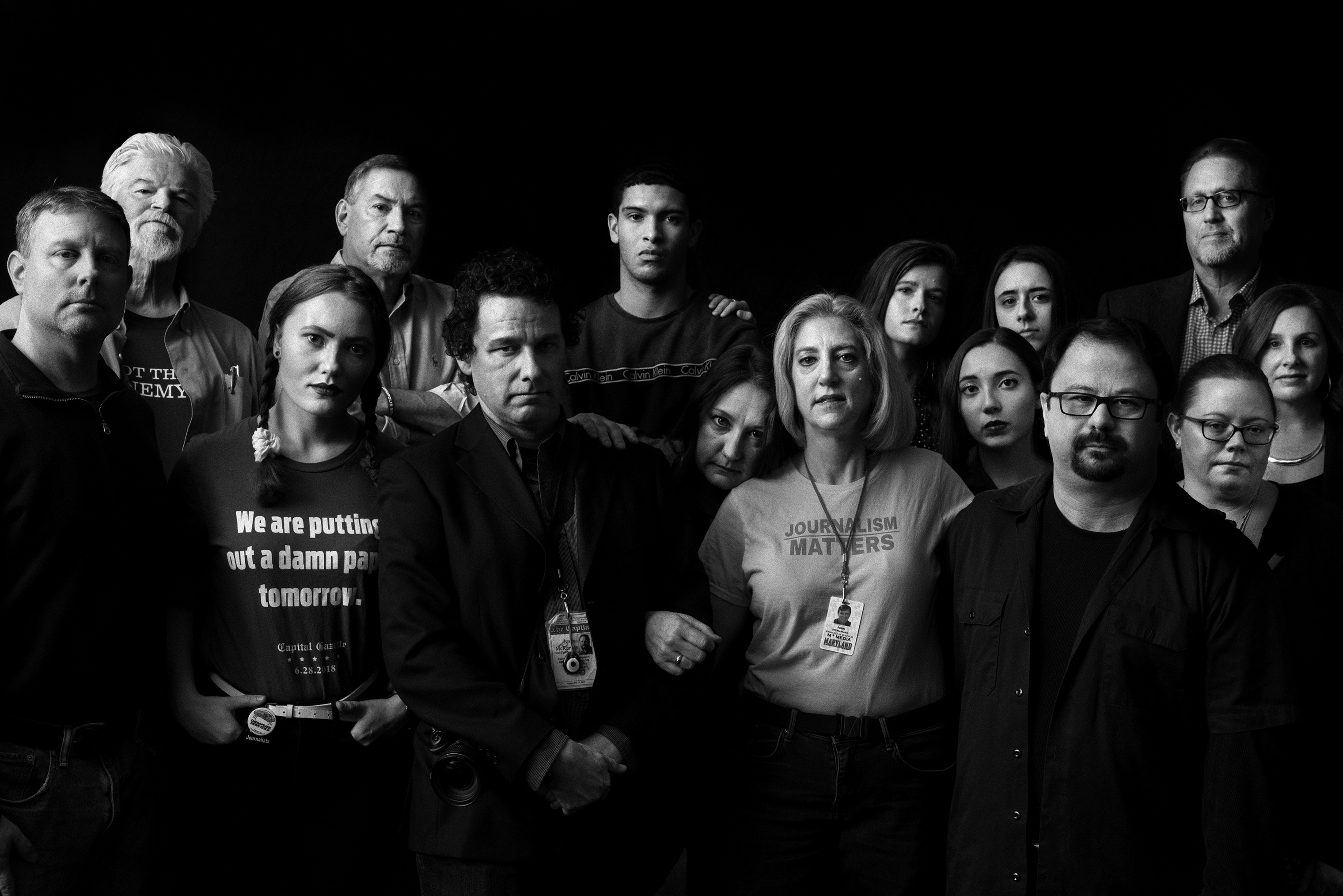
The question no longer seems strange, for the same reason a close look at where we get our news no longer sounds like civics-class homework. In normal times, the U.S. news media is so much a part of public life that, like air, it’s almost impossible to make it out. But it has been made conspicuous—by the attacks and routine falsehoods of the President, by social-media behemoths that distribute news but do not produce it and by the emerging reality of what’s at stake.
Efforts to undermine factual truth, and those who honestly seek it out, call into doubt the functioning of democracy. Freedom of speech, after all, was purposefully placed first in the Bill of Rights.
In 2018, journalists took note of what people said, and of what people did. When those two things differed, they took note of that too. The year brought no great change in what they do or how they do it. What changed was how much it matters.
***
“I can tell you this,” declared Chase Cook, a reporter for the Capital Gazette. “We are putting out a damn paper tomorrow.”
Cook’s promise, shared with the world on Twitter, came just a few hours after five of his colleagues were killed. The man charged with their murders had been obsessed with the paper since it wrote about his harassment of a high school classmate—part of its routine coverage of local legal proceedings. He made the office a crime scene. To put the damn paper out, staffers set up laptops in the bed of a pickup in a parking garage across the street.
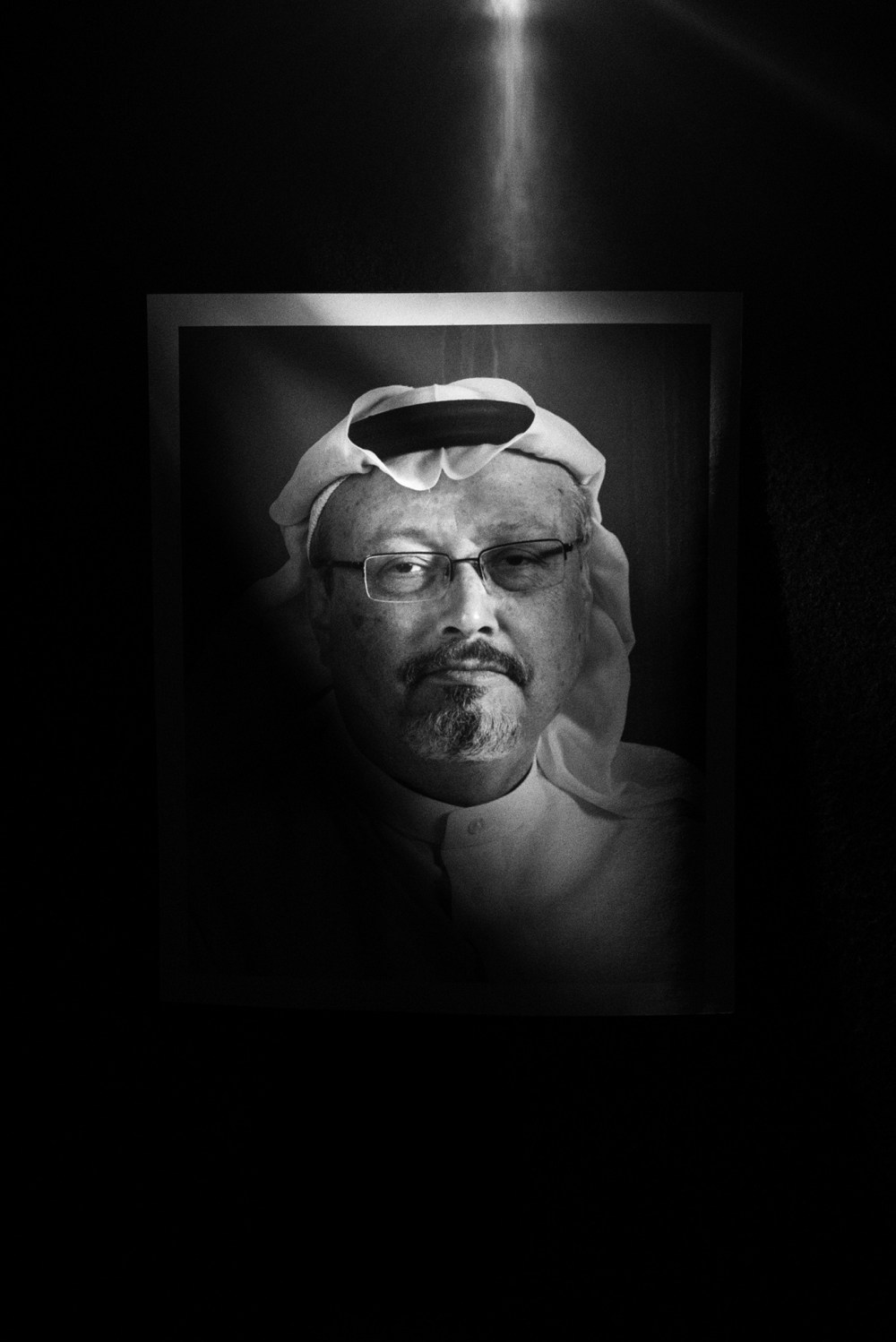
When the next edition arrived—on schedule—the opinion page was blank but for the names of the dead. Gerald Fischman. Rob Hiaasen. John McNamara. Rebecca Smith. Wendi Winters. Beneath their names was a coda that might have been written with a goose quill: “Tomorrow this page will return to its steady purpose of offering our readers informed opinion about the world around them, that they might be better citizens.”
That’s the workaday business of local news. “Community journalists are the only ones who are going to go to your kid’s basketball game,” says Selene San Felice, a Capital Gazette features reporter. “They’re the only ones who are going to cover lifeguard training ... They’re the only ones who are going to cover your local elections and tell you exactly what’s going on.”
This passing of valued information is a wholesome essential of self-government. We can’t reason together if we don’t know what we’re talking about. But the information has to be trusted.
It mostly still is, in places like Annapolis, where the Capital Gazette operates. A poll released in August by the Poynter Institute, a nonprofit devoted to improving journalism, found that more than 70% of Americans express either “a fair amount” or “a great deal” of trust in both their local papers and local TV news, even as resources for both continue to shrink. It’s what you might expect of neighbors. At the local level, journalists and community remain mutually reinforcing.
The national media enjoyed the same kind of connection not so long ago. In 1976, 72% of Americans voiced trust in all news outlets (before 1972, whether Americans trusted the news media was not a question Gallup bothered to ask). But while most institutions rode a steady downslope in public confidence in the jaundiced aftermath of Vietnam and Watergate, the national media traveled its own path. There was a split—by party.
'I’ve been a war-zone correspondent. That is easy compared to what we’re dealing with now.'
Maria Ressa

“We have an era from the ’70s until about 2000, when both Democrats and Republicans were becoming more skeptical of the press,” says Jonathan Ladd, director of the American Institutional Confidence Poll at Georgetown University. “Then in the past 18 to 20 years, the partisan divide is growing, where most of the continuing decline is on the Republican side.”
The division coincides with the growth of partisan cable news networks. In 1996, Fox News Channel was founded on the assumption that the national media reflected the liberal inclinations of journalists working for it. And surveys did show a lean to the left in their personal politics. Fox was not the first news outlet to thrive by offering news viewers the satisfaction of a shared view of the world—MSNBC, its liberal counterpart, premiered four months earlier—but it was the most strikingly partisan in a television landscape that historically tried not to be.
When TV arrived in homes via physically scarce airwaves, a license to broadcast was deemed a public trust, and the Federal Communications Commission enforced the Fairness Doctrine, which required stations to cover public controversies, and to include more than one side. The hundreds of channels brought by cable rendered the scarcity premise obsolete as justification for regulation (the Fairness Doctrine was repealed in 1987), and the fire hose that is the Internet has washed away the last traces. So it was that TV news went from being a blandly unifying force, confined largely to half-hour nightly newscasts, to a constant companion nudging the country into partisan camps.
Especially around presidential elections. On a fever chart of media trust, the downward slope makes sharp dips every four years, followed by upswings after the President is chosen. But the recovery after 2016 was partial. Republicans remain deeply distrustful of most news outlets. “Even things that are demonstrably true, people are skeptical about, and that’s a pretty dangerous slope to be on,” says Marc Hetherington, a political-science professor at the University of North Carolina and author of Why Trust Matters.

Most journalists are under no illusions about their infallibility. They make mistakes, every day. The framing of “fake news” posits that any errors are intentional, a coordinated campaign to deceive. Less discussed—and contrasting sharply with the lies of autocrats—is the speed with which any good news organization moves to publicly correct and acknowledge its mistakes.
“People assume the worst about journalism,” says Joy Mayer, director of the Trusting News Project, which works with community news organizations. “They have all these assumptions that we pay our sources, that when we talk about anonymous sources, we don’t even know who those sources are. They’re surprised that we have ethics policies and that we have long discussions about which word to use or which photo to use.”
News organizations bear some responsibility for this. The ethos of remaining separate from the story has hindered journalists from explaining how they do their work, warts and all. But some are finding these days that just communicating basic and obvious facts can be a struggle. That’s even harder from a distance. “Freedom of the press starts at the local level,” says Capital editor Rick Hutzell. “At the national level nobody’s listening—they’re all shouting too much.”

***
The morning after dissident politician Boris Nemtsov was murdered on a Moscow bridge in 2015, employees at a troll farm called the Internet Research Agency opened their work orders: “Create the opinion that Ukrainians could have been mixed up in the death of the Russian opposition figure.” We know about the instruction because some of the few media outlets free of Vladimir Putin’s control—including a news outlet called MR7.ru—got a copy, and posted it online. Otherwise, Nemtsov’s death might have been obscured entirely by the haze of charge, countercharge, links and conspiracy theory that autocrats encourage, because they obscure testable reality and the activism it might inspire.
In the U.S., hyperconnectivity means the country can be targeted by misinformation from anywhere. The same Internet Research Agency was named in the federal indictment handed up to a U.S. District Court in February, charging Putin’s allies with mass-producing posts that aimed to affect the 2016 presidential election.
By then, the U.S. intelligence agencies and Justice Department had concluded that Russian operatives seeded Facebook with uncounted posts intended to help the Trump campaign and sow dissent among supporters of Hillary Clinton. Bloomberg News revealed that, with the help of Facebook employees, the Trump campaign used nonpublic “dark” posts to discourage some African Americans from voting.
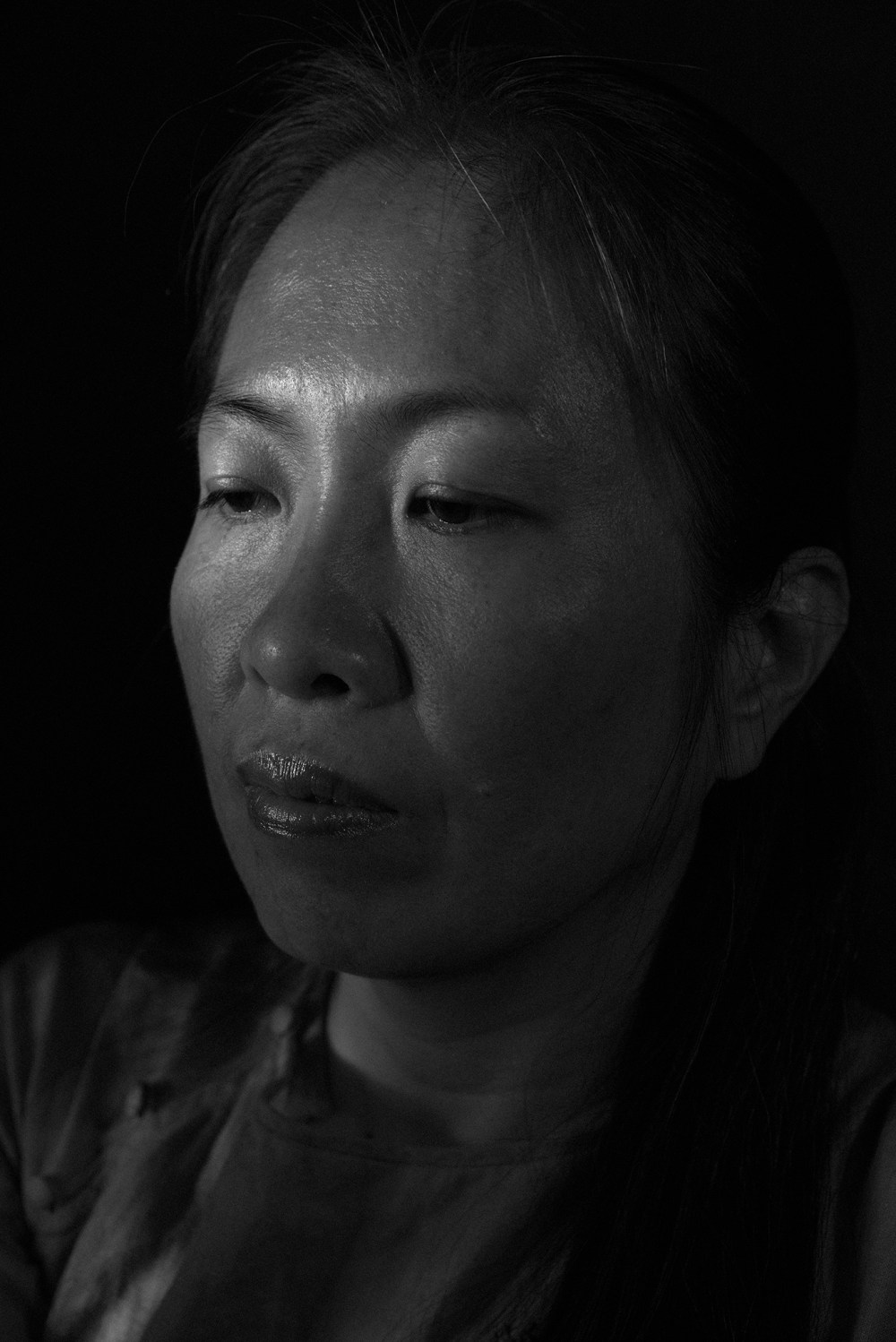
Moises Saman—Magnum Photos for TIME
In March, the New York Times and Britain’s Observer reported that Facebook had allowed private data from up to 87 million users to reach Cambridge Analytica, a political consultancy founded by a billionaire backer of Trump. The data was used to promote his candidacy without users knowing the source.
“I had the immediate association with the brainwashing of the communist regime,” says Vera Jourova, the European Union Commissioner for Justice, who grew up in communist Czechoslovakia. “When you are targeted with this misinformation through your mailbox or Facebook account, without having a clue that someone is trying to influence you, the result is the same. So that was my first instinct: My God, we have to stop this. This is turning into a totalitarian arrangement.”
Information on social media turns out to be hugely problematic. Facebook, like other social media, makes money by keeping people on the platform. To do so, its software—the algorithms that determine what shows up on your screen—frequently delivers content in a way that promotes political polarization. Some of the problem is mixing civics with kid pictures, “social” and society. For the same reason that people avoid political discussion at Thanksgiving, Facebook users may tend not to “friend” people with opposing views. But even if they do, Facebook will suppress their views in your news feed—by 5% among conservatives, and 8% for liberals, according to University of North Carolina information sciences professor Zeynep Tufekci’s analysis of a study by Facebook data scientists. That unseen suppression occurs on top of people’s conscious decisions not to click on things they disagree with. In the same study, those decisions limited exposure to diverse opinions by 6% for liberals and by 17% for conservatives.
Facebook has said it is changing its algorithms to promote “meaningful” social interactions and working to limit fake news on the platform.
Two-thirds of American adults say they get news from social media. In a 2018 survey by Gallup and the Knight Foundation, Americans said they regard 65% of information on social media as “misinformation.”
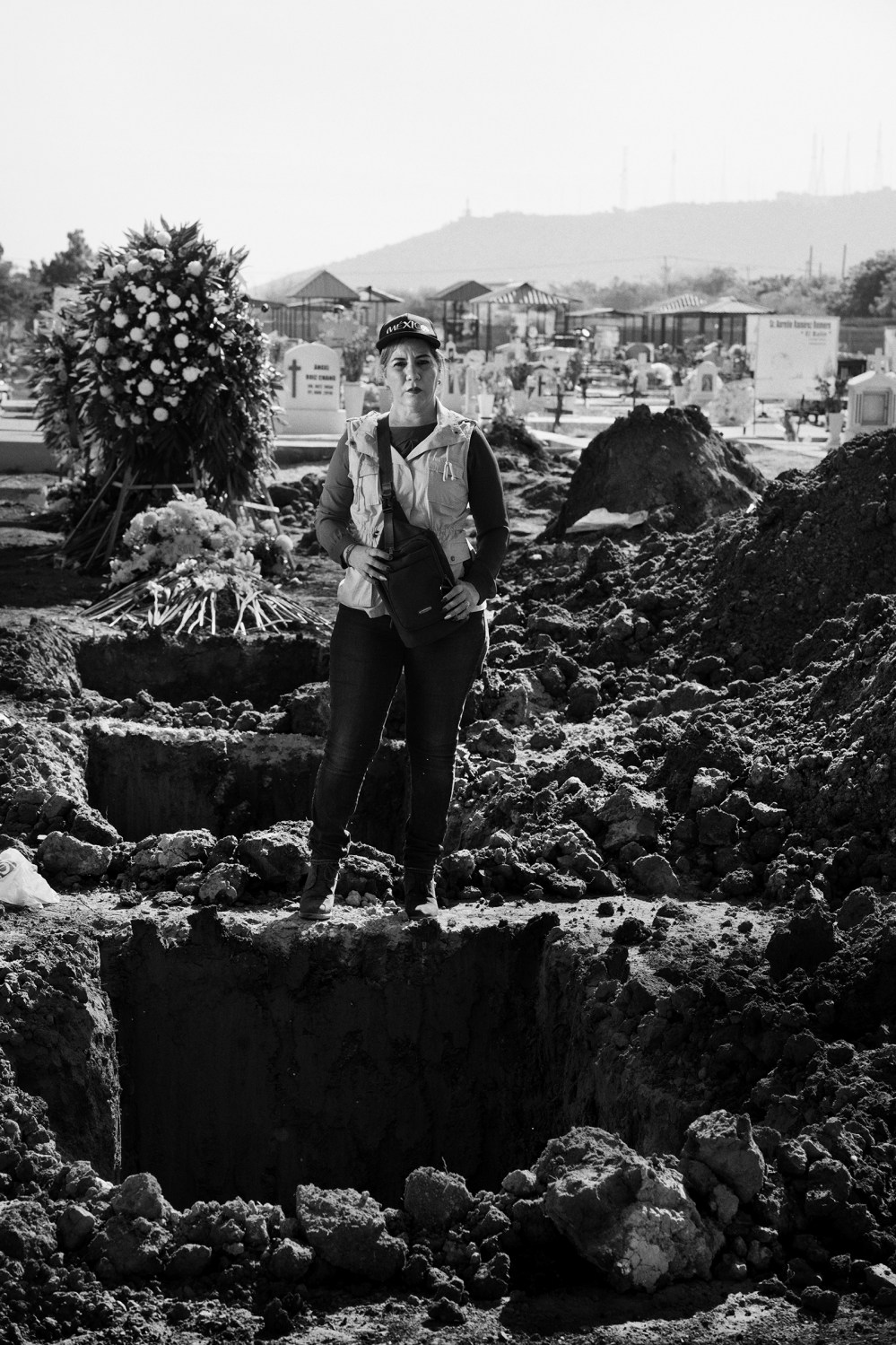
Machines are not friends of civic engagement. Within the bubbles they help us build, the algorithms tend to promote negative messages. “Fear and anger produce a lot more engagement and sharing than joy,” early Facebook investor turned critic Roger McNamee wrote in the Washington Monthly. BuzzFeed reported shortly after Trump’s election that “top fake election news stories generated more total engagement on Facebook than top election stories from 19 major news outlets combined.”
In real life, engagement can mean listening, exchanging opinions, reading faces. In tech, engagement means any activity on the platform, which maximizes profits for companies that sell your attention to advertisers. Print media and TV sell ads too, but their primary product was credibility. As established media companies struggled to adapt their business models to digital, they often lined up to partner with the social-media companies that now controlled the audience.
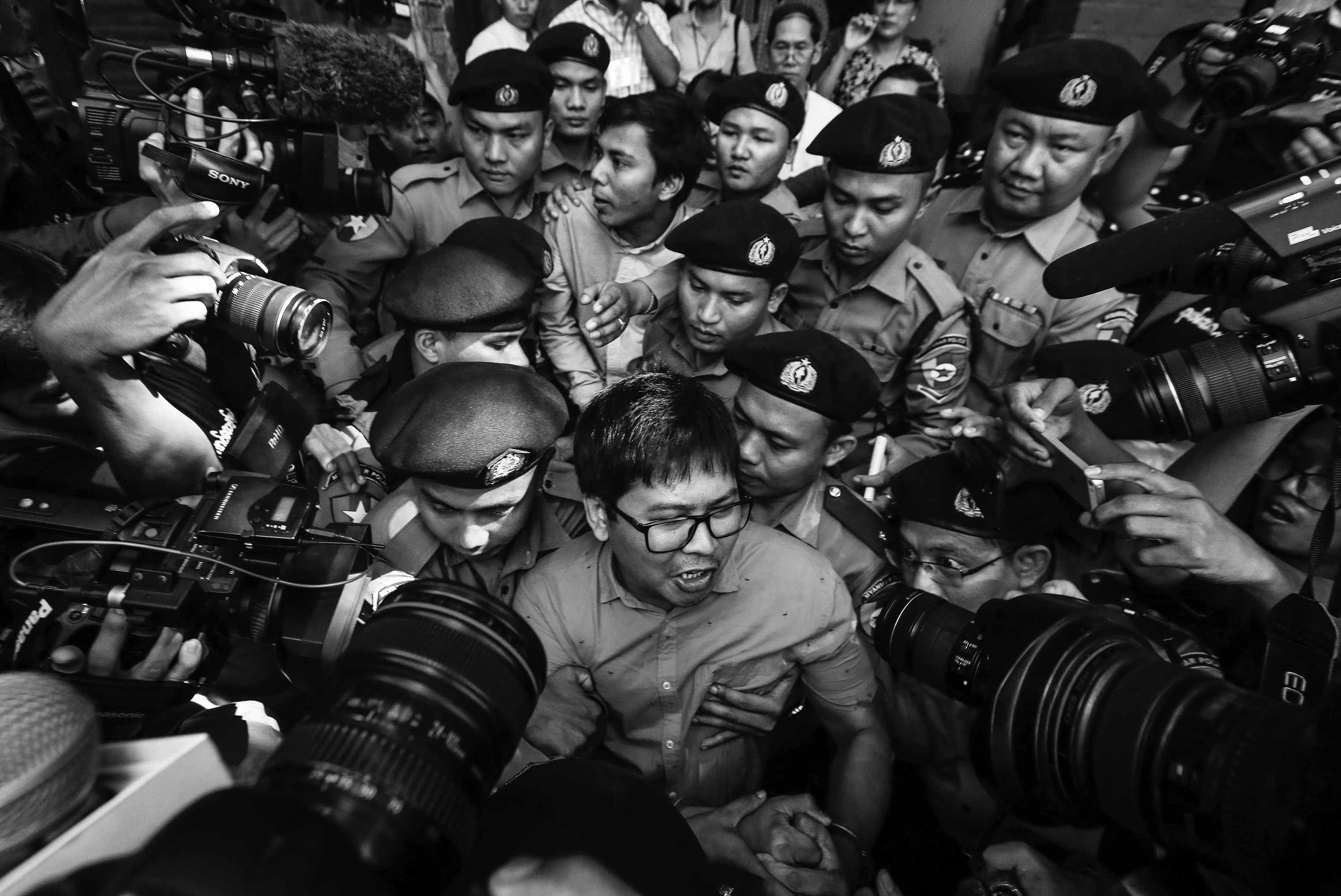
In some countries, social media essentially is the Internet. A Facebook-funded program makes the social-media site free in the Philippines, which means most people are unable to access anything beyond it, as other websites—including news sites—require more expensive data use. “If your mass base gets Facebook for free and thinks it’s the Internet, they don’t realize A) it’s filtered and B) You can’t search,” says Ressa, the Rappler editor. Without search, there’s no way to check information.
When the Internet started, the goal was empowerment through connection. Now, when Jourova sees senior executives from Google and Facebook, she says her first question is: “‘How will you improve the world which you have spoiled?’ At first they laugh, and then they see that I mean it seriously.
“It’s been a painful period for them,” Jourova says of the Silicon Valley giants. “They underestimated the natural movement and behavior of bad forces.” The other factor is financial, she says. “When you make big money, you can become blind to the moral aspect of what you’re doing.” The E.U. is pushing regulations that would require platforms to remove hate speech and propaganda. Computational propaganda was the term Ressa picked up at a conference: “It is meant to mislead and deceive to create artificial consensus, to manufacture reality.”
Google took the motto “Don’t be evil,” but, like Facebook, makes money by selling our attention. Twenty-one percent of American adults get some of their news from YouTube, a Google company. Its algorithm produces engagement by suggesting (and often auto-playing) videos endlessly, but not randomly. Nor does the site exhibit much evidence of journalistic rigor. On Nov. 27 at 11 a.m., two of the five stories displayed on YouTube’s World News home page were from RT, formerly known as Russia Today, the Kremlin-backed 24-hour news channel, notorious for its sly disinformation.
'Some of my Facebook friends attacked me and would ask, 'Why can't you control your husband?' They called him and Kyaw Soe Oo traitors. I have just become numb to it.'
Pan Ei Mon
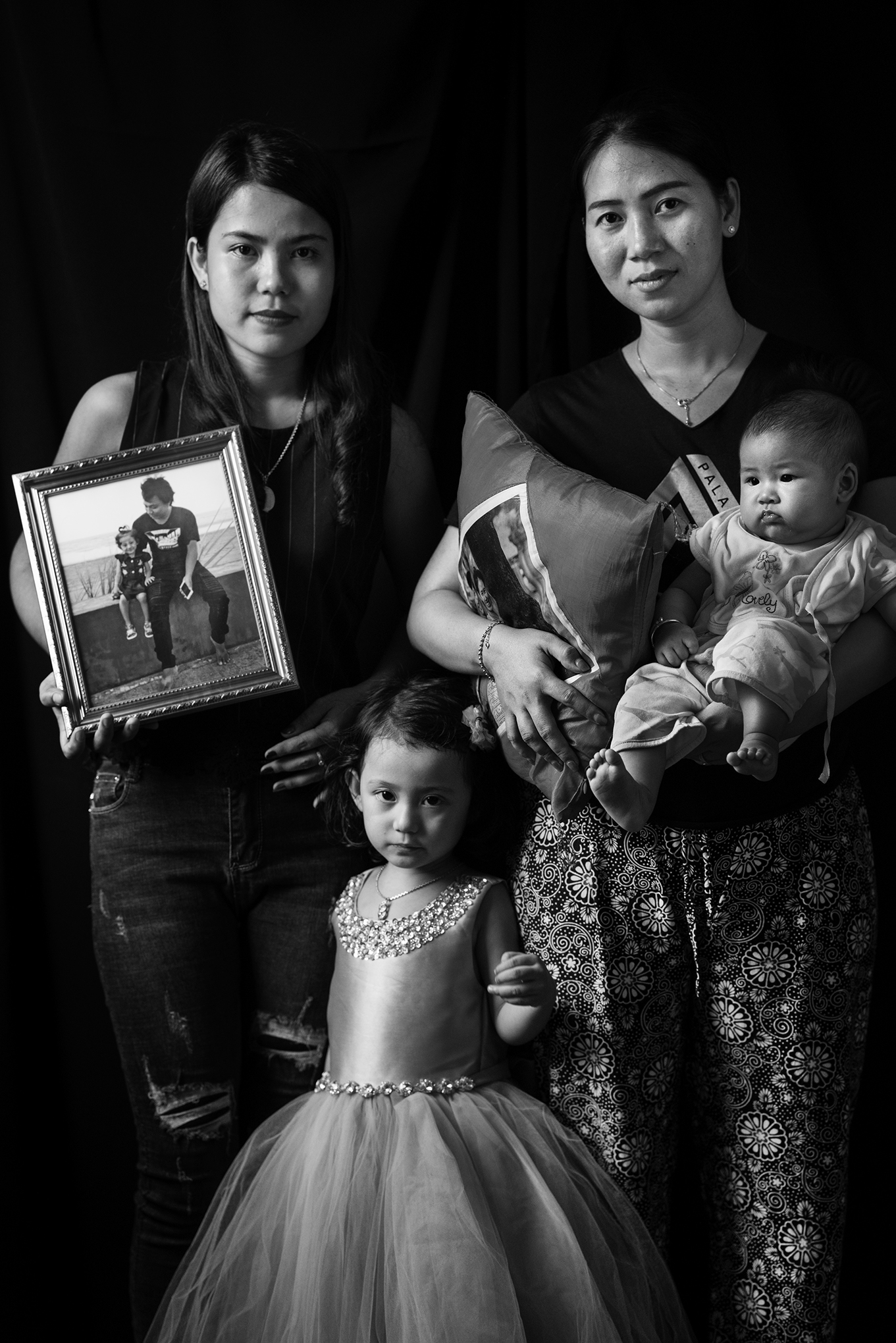
In a statement, a spokesperson for YouTube said it has worked to change its algorithms over the last year to promote credible news sources and provide more fact-checking resources.
Small wonder that the heaviest users of social media—young people—are the most skeptical of what’s presented to them as news. In groups convened by the Knight Foundation to talk about news and smartphones, teens and college-age Americans said they consider every source biased, except perhaps raw video from cell phones or surveillance cameras. But their appetite for authentic information remains acute. And as they shift from one platform to another, comparing sources and sifting facts, they are basically acting as journalists.
Which says something about the state of the news business in 2018. The Internet was supposed to make reporting more transparent. In a world where readers and viewers can get online and check everything, you’d better show your work. But it wasn’t that simple. The Internet also siphoned away ad revenue—roughly 60% of every digital advertising dollar in the U.S. now goes to Google or Facebook. In recent years, news outlets relied heavily on the platforms to steer audience their way, and in order to find favor on Facebook’s algorithms or a Google search, stories were tweaked for grabby headlines or to elevate the emotional angle. The net effect: fewer and fewer people are actually out reporting—the number of journalists has dropped from 114,000 to 88,000 from 2009 to 2017—while more and more stories recast the same facts in a slightly different way, to provoke reposting on social media.
In the U.S., local newsrooms are disappearing fastest. Since 2004, the U.S. lost nearly 1,800 newspapers, the UNC Center for Innovation and Sustainability in Local Media found in an October report. Half of the 3,143 counties in the U.S. now have just one newspaper, usually a small weekly. Nearly 200 counties have no newspaper. And “between 1,300 and 1,400 communities that had newspapers of their own in 2004 now have no local news coverage at all.”
'Free journalism in Venezuela is a species in extinction.'
Luz Mely Reyes

***
For a certain kind of politician, there is an almost liberating genius to framing independent journalists as the enemy. Stray from the truth, and whoever corrects you can be dismissed as “the other side.” The strategy runs on a dangerous assumption—that we’re not all in this together.
A month after taking office, President Trump sat for an interview with Breitbart, the right-wing online news site that had been run by his then chief strategist, Steve Bannon. “The fake media is the opposition party,” the President declared. “The fake media is the enemy of the American people.”
The “enemy” line had been floated 10 days earlier, in a tweet that named the offending news organizations: “The FAKE NEWS media (failing @nytimes, @NBCNews @ABC, @CBS, @CNN) is not my enemy, it is the enemy of the American People!”
The President may not have known the history of the phrase. It was used in the Soviet Union, to condemn subordinates at the 1930s show trials Joseph Stalin ordered before executing those who had fallen out of favor. “The people” were peasants who had starved after Stalin confiscated grain harvests. The officials were the dictator’s scapegoats.
The Breitbart reporter was interested in defining fake news. He asked: “Can you kind of more clearly define what standards and quality we should expect from those who are doing reporting?”
“It’s intent,” Trump replied.
Intent is difficult to assess from outside, but in writing the Constitution a President swears an oath to defend, the Founders made their intentions clear enough: the press is intended to serve the public, and thus serve as a check on government. “The only security of all is in a free press,” wrote Thomas Jefferson, who famously said that given the choice between government and newspapers, he would make do without government (not that he didn’t have his share of criticism for the ways those papers covered him).
Trump’s rhetoric has been embraced by leaders less restrained in their ability to tamp down on reporters. In Hungary, ahead of elections in April, investigative reporter Andras Dezso embarrassed the government of Prime Minister Viktor Orban, a democratically elected ultranationalist who had solidified power by vilifying immigrants. After state television carried a sensational interview with a woman who told frightening stories of Muslim immigrants, Dezso exposed deep flaws in her account, reporting her ties to Orban’s allies and her record of legal troubles for Index.hu, one of the shrinking number of outlets not controlled by government loyalists. Police called the reporter in for questioning, taking his fingerprints and mug shot. A court then issued a formal reprimand against him for “misusing” information he had found in public databases.
“The post-truth wave started in Hungary two years before Trump,” says Dezso, who draws a line from the U.S. President’s attacks on the media to the plight of journalists in countries where the U.S. formerly encouraged democracy. “It was very useful for Orban that Trump took up his line against the media. It showed the government here that they can become more aggressive, more bold in their own attacks against us.”
The attacks against the press feed into populism’s dark side. “What Orban did first was cast journalists as his political opponents,” says Dezso. “Not merely chroniclers of the political scene but actors within it. The people then saw us as a pillar of power, and there is a primal pleasure in watching such pillars burned.”
'This is the world of the strong leaders who hate the free press and truth. When you start defending the truth, you become the story itself.'
Can Dündar

At least for some. “With polarization, the belief in your own truth has become stronger, and it doesn’t matter if others say it’s a lie,” says Cristina Zahar, executive secretary of the Brazilian Association of Investigative Journalism. Brazilians in October elected Bolsonaro, a populist reactionary who lambasts major media outlets. “These are new times, really new times,” she says. “And journalists need to find ways to deal with this.”
For now, the most prominent U.S. newspapers resist a combat role. “We’re not at war with the Administration. We’re at work,” Washington Post editor Martin Baron has said. And there’s been a lot of work to do. In the first year of the Trump presidency, 25 top Administration officials and Cabinet members have resigned or been fired—more than triple the percentage of Obama, Clinton and both Bushes, and double that of Reagan—following revelations of conflicts of interest, corruption or other impropriety, many uncovered by reporters. The New York Times dug through 100,000 pages of documents to determine that Trump had received at least $413 million from his father, and participated in “dubious tax schemes during the 1990s, including instances of outright fraud.” The Wall Street Journal revealed candidate Trump had paid $130,000 to porn star Stormy Daniels, an apparent campaign-finance felony. ProPublica’s release of a recording of children crying in a detention center galvanized public attention on the Administration’s “zero tolerance” policy of separating children from their parents at the border with Mexico.
It’s accountability reporting of the first order, backed by long tradition and legal protections. But those protections have started to crack even in the places where they used to be strongest. Four reporters have been murdered in the European Union since the start of last year. In February, police found the body of Ján Kuciak, a methodical chronicler of corruption in Slovakia, alongside that of his fiancée. The couple, both 27 years old, had been shot at point-blank range inside the modest house they planned to make their family home.
The attack on the Capital Gazette newsroom made the U.S. the fourth-deadliest country for journalists this year, tied with Mexico, notorious for the dangers its journalists face. “You never know when or where you can get smacked,” says Ismael Bojórquez, whose colleague Javier Valdez at the RioDoce, an independent paper in Sinaloa state, notorious as the cradle of narco-trafficking, was killed outside the newspaper’s front door last year. Dulcina Parra, a Sinaloa reporter who emerged alive from a 2009 kidnapping, still goes to work. “I feel it’s part of what I owe society,” she says.

It’s when attacks are both political and personal that neutral ground shrinks, and professional truth seekers feel extraordinary pressure to choose a side. Khashoggi rejected the label “dissident,” insisting, “‘I am an independent journalist using his pen for the good of his country,’” his fiancée Hatice Cengiz wrote in the New York Times. In exile, the Turkish journalist Dündar regrets being forced to act as a dissident in the pursuit of truth. In Kiev, Arkady Babchenko decided it was the only choice.
At his old Moscow newspaper, Novaya Gazeta, at least five journalists have been killed since 2000. Babchenko says he knew most of them personally. So when security officers in Ukraine warned him that he was targeted for assassination, he took the threat seriously. Then he says they told him the only way to expose the plot—and remove the threat to others on the hit list—was to fake his own death. Babchenko went along: he was photographed in a pool of pig’s blood, then revealed his living self at a news conference the next day. Suspects were arrested, but the charade left the reporter a pariah to some colleagues, and Babchenko in a new place. Once a week, bodyguards follow him to his talk show, where he discusses Russian affairs before a backdrop of the Kremlin in flames.
Accuracy, fairness, professionalism—the pillars of journalism took root in the U.S. and Britain, spread around the world, and remain the standard. In the U.S., the press retains qualities of a citadel, protected not only by laws and court decisions, but the awareness of the great majority of public officials who serve something larger than themselves.
But dissonance rains down from the top. In November, the White House not only took the unprecedented step of banning a reporter—it then released, as supporting evidence, an apparently doctored video, digitally altered to portray actions that had not occurred. Still more remarkably, the video was first shared by Infowars, the aptly named website of Alex Jones, the fringe conspiracy theorist who traffics in paranoia and illusion.
'Freedom of expression is like a jungle now. We have no laws. You’re not a citizen. You are nothing.'
Amal Habani

A U.S. district judge ordered CNN chief White House correspondent Jim Acosta’s press pass returned; Fox News joined the pleadings on the side of the press, and the White House obliged. But days earlier, a Fox host, Sean Hannity, had joined the President on the stage of a campaign rally. The President promotes Fox shows routinely in tweets, and vociferously opposed the merger of CNN parent company Time Warner (a onetime parent of TIME) with AT&T.
The consolidation of the nation’s media outlets is certainly cause for concern. Just five corporations control what most Americans see or hear (in 1983, it was 50). But Trump made no public objection when Sinclair Broadcast Group proposed buying Tribune Media. That merger would have left Sinclair with television stations that reach 72% of U.S. homes—nearly double the percentage allowed by the FCC, which had winked at earlier expansions. Sinclair is an unusual owner, in that it requires stations to carry news reports and commentaries from its central office, packaged to appear local. In March, Sinclair required some 200 anchors to recite a script warning that “some members of the media use their platforms to push their own personal bias and agenda to control exactly what people think.” The website Deadspin captured the Orwellian moment in a chilling compilation video.
For the first time in living memory, an element of personal danger has entered coverage of public affairs in America. Bodyguards now escort CNN reporters through Trump rallies, and the network’s Manhattan newsroom was evacuated in October when its mail room found one of the 16 pipe bombs addressed to Trump critics. Police traced the bombs to a Florida man living in a van plastered with Trump stickers.
***
The heightened risk for journalists in the U.S. still pales compared with those working to report the truth elsewhere. In Myanmar, the friction points in society are ethnic, with an overlay of religion. About 88% of the people are Buddhist. The Rohingya are a small population of Muslims mostly from the state of Rakhine, not far from Bangladesh, the Muslim country that many Burmese regard as the best dwelling place for the Rohingya. Successive governments have refused to give Rohingya citizenship, rendering most stateless. There is an armed separatist movement, a contested history and a state of tension that is almost constant, especially in Rakhine state.
Kyaw Soe Oo grew up there. He was raised Buddhist, but did not share the widespread bias against his Rohingya neighbors. “Kyaw Soe Oo believes every human should be treated equally and there should be no discrimination against anyone,” says his wife, Chit Su Win. “He has tried to teach his daughter this value too.” As her mother spoke inside a tidy apartment strewn with toys in Yangon’s Insein township, the 3-year-old sat on her lap, watching Frozen.
Once a poet, Kyaw Soe Oo found a passion for journalism. He worked for a local paper, then in 2017 was hired as a reporter for Reuters, the global news agency. He worked closely with Wa Lone, a hard-charging reporter who at 32 is four years older, also Buddhist and also from the provinces. Together, they covered one of the biggest stories in the world that year—the transfer of hundreds of thousands of Rohingya across the border to Bangladesh, pushed out by Burmese forces.
Working in their homeland for a leading international news organization, they walked a line that eluded Aung San Suu Kyi, the de facto leader of the government who, before she wielded political power, won a Nobel Prize for Peace for her moral authority. In power, she has remained silent as verified reports pile up of arson, rape and mass executions by military forces against the Rohingya.
'When you’re confronted with evil, real evil, you can’t just take your notebook out and ask it for a comment.'
Arkady Babchenko

On Dec. 12, 2017, Kyaw Soe Oo and Wa Lone were invited to dinner by a police official. They had been investigating the execution of 10 Rohingya men the official’s unit was involved in. After the meal, the police handed the reporters some papers, discreetly wrapped in a newspaper. Moments later, the reporters were placed under arrest for possession of the papers, which they had not yet read. In September, Kyaw Soe Oo and Wa Lone were sentenced to seven years in prison. A police captain who testified that they were framed was prosecuted separately.
Whom do you trust? It may seem a wonder that, in a world riven by tribal tensions, national leaders seek division where sturdy bridges already stand, and confusion where clarity can mean the difference between life and death. The world may not be getting worse, only more confused, but in time that distinction can vanish. There is urgent work ahead in shaping a communications system guided not by software but by the judgment of citizens, and the social contract implied in the First Amendment: facts matter.
Not even his wife really understood what Kyaw Soe Oo did for a living. She got a glimmer of the risk involved from a Korean movie they watched together, about a reporter covering a massacre. And then one day in 2017 she went with him into Rakhine, to do some sightseeing in a town that suddenly came under attack from a Rohingya militant group.
“I went with him because I had never been to Maungdaw before,” she says. “I wanted to see Maungdaw. I saw fighting.
“I ran. He went to work.” —With reporting by Abigail Abrams, Katie Reilly and Paul Moakley/New York; Abby Vesoulis and Josh Meyer/Washington; Simon Shuster/Kiev; Eli Meixler/Dhaka; Laignee Barron/Yangon; Ioan Grillo/Sinaloa; Joseph Hincks and Feliz Solomon/Hong Kong; and Matt Sandy/Rio de Janeiro
Read TIME Editor in Chief Edward Felsenthal on this year's Person of the Year Choice.